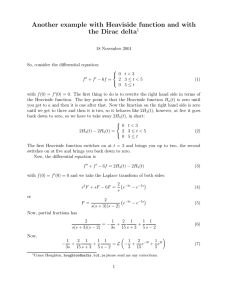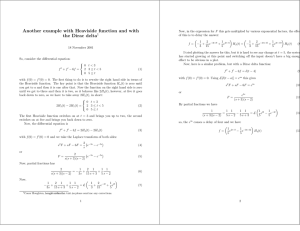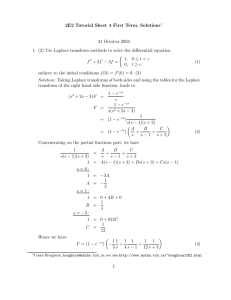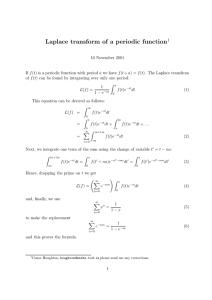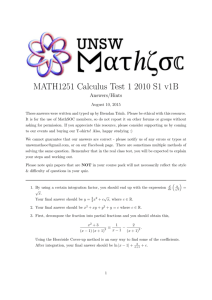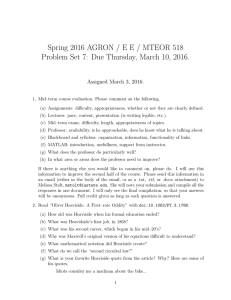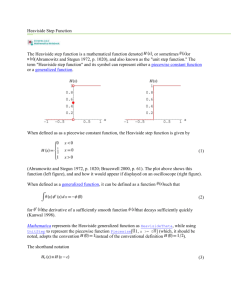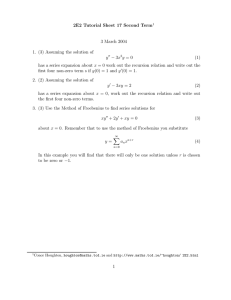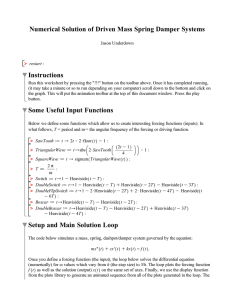Simple example with Heaviside function
advertisement
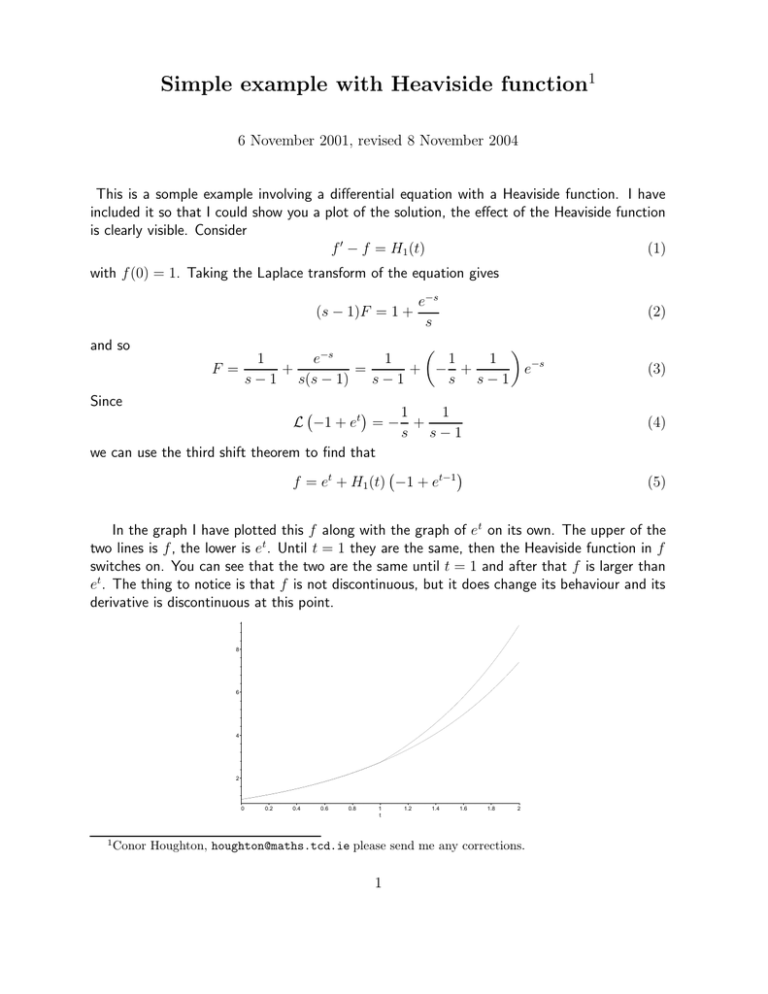
Simple example with Heaviside function1 6 November 2001, revised 8 November 2004 This is a somple example involving a differential equation with a Heaviside function. I have included it so that I could show you a plot of the solution, the effect of the Heaviside function is clearly visible. Consider f 0 − f = H1 (t) (1) with f (0) = 1. Taking the Laplace transform of the equation gives and so e−s (s − 1)F = 1 + s (2) e−s 1 1 1 1 + = + − + e−s F = s − 1 s(s − 1) s−1 s s−1 (3) Since 1 1 L −1 + et = − + s s−1 we can use the third shift theorem to find that f = et + H1 (t) −1 + et−1 (4) (5) In the graph I have plotted this f along with the graph of e t on its own. The upper of the two lines is f , the lower is et . Until t = 1 they are the same, then the Heaviside function in f switches on. You can see that the two are the same until t = 1 and after that f is larger than et . The thing to notice is that f is not discontinuous, but it does change its behaviour and its derivative is discontinuous at this point. 8 6 4 2 0 1 0.2 0.4 0.6 0.8 1 t 1.2 1.4 1.6 1.8 2 Conor Houghton, houghton@maths.tcd.ie please send me any corrections. 1

